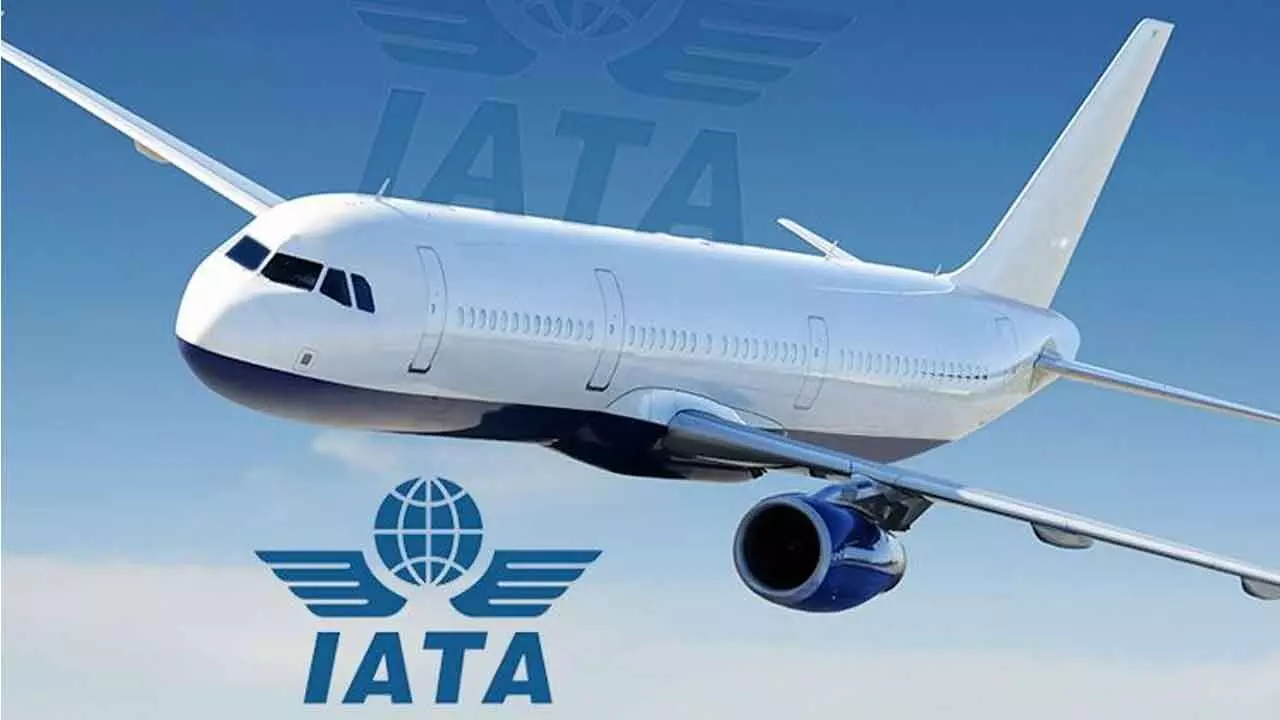IATA projects a more profitable year ahead for global aviation
Non-fuel expenses have been controlled relatively well by airlines despite inflationary pressures
image for illustrative purpose

The high demand for travel coupled with limited capacity due to persistent supply chain issues continues to create supply and demand conditions supporting yield growth. Passenger yields in 2024 are expected to improve 1.8% compared with 2023.
Reflecting the tight supply and demand conditions, efficiency levels are high with the load factor expected to be 82.6% in 2024, slightly better than 2023 (82%) and the same as in 2019
The International Air Transport Association (IATA) in its latest announcement has strengthened profitability projections for airlines in 2023, which are set to stabilize in 2024. However, net profitability at the global level is expected to be well below the cost of capital in both years, especially considering that regional variations in financial performance remain. Airline industry net profits are expected to reach $25.7 billion in 2024 (2.7% net profit margin). This will mean a marginal improvement over 2023, which is expected to show a $23.3 billion net profit (2.6% net profit margin).
In both 2023 and 2024 return on invested capital will lag the cost of capital by 4p.p, as interest rates around the world have risen in response to the sharp inflationary impulse. The operating profits of the airline industry are expected to touch $49.3 billion in 2024 from $40.7 billion in 2023. This is even as total revenues in 2024 are expected to grow 7.6% year over year to a record $964 billion.
Expense growth is expected to be slightly lower at 6.9% for a total of $914 billion.
Some 4.7 billion people are expected to travel in 2024, an historic high that exceeds the 4.5 billion recorded in 2019. Cargo volumes are expected to be 58 and 61 million tonnes in 2023 and 2024, respectively.
Overall revenues in 2024 are expected to rise faster than expenses (7.6% vs. 6.9%), thereby strengthening profitability. Although operating profits are expected to increase 21.1% ($40.7 billion in 2023 to $49.3 billion in 2024), net profit margins increased at less than half the pace (10%), largely due to increased interest rates expected in 2024.
Industry revenues are expected to reach a historic high of $964 billion in 2024. An inventory of 40.1 million flights is expected to be available in 2024, exceeding the 2019 level of 38.9 million and up from the 36.8 million flights expected in 2023.
Passenger revenues are expected to reach $717 billion in 2024, up 12% from $642 billion in 2023. Revenue passenger kilometers (RPKs) growth is expected to be 9.8% year on year. Although that is more than double the pre-pandemic growth trend, 2024 is expected to mark the end of the dramatic year-on-year increases that have been characteristic of the recovery in 2021-2023. The high demand for travel coupled with limited capacity due to persistent supply chain issues continues to create supply and demand conditions supporting yield growth. Passenger yields in 2024 are expected to improve 1.8% compared with 2023.
Reflecting the tight supply and demand conditions, efficiency levels are high with the load factor expected to be 82.6% in 2024, slightly better than 2023 (82%) and the same as in 2019.
Cargo revenues are expected to fall to $111 billion in 2024. That is down sharply from an extraordinary peak of $210 billion in 2021, but it is above 2019 revenues which were $101 billion. Yields will continue to be negatively impacted by the continued growth of belly capacity (related to strong growth on the passenger side of the business) while international trade stagnates. Yields are expected to further correct towards pre-pandemic levels with a -32.2% decline in 2023 followed by a -20.9% decline expected in 2024. They will remain high by historical standards, however.
Expenses are expected to grow to $914 billion in 2024 (+6.9% on 2023 and +15.1% on 2019). The fuel price is expected to average $113.8/barrel (jet) in 2024 translating into total fuel bill of $281 billion, accounting for 31% of all operating costs. Airlines are expected to consume 99 billion gallons of fuel in 2024. High crude oil prices are expected to continue to be further exaggerated for airlines as the crack spread (premium paid to refine crude oil into jet fuel) is expected to average 30% in 2024.
Industry CO2 emissions in 2024 are expected to be 939 million tonnes from the consumption of 99 billion gallons of fuel.
The aviation industry will increase its use of Sustainable Aviation Fuels (SAF) and carbon credits to reduce its carbon footprint. We estimate that SAF production could rise to 0.53% of airlines’ total fuel consumption in 2024, adding $ 2.4 billion to next year’s fuel bill.
In addition, the Carbon Offsetting and Reduction Scheme for International Aviation (CORSIA) is a global market-based carbon offsetting mechanism designed to stabilize international aviation emissions. The CORSIA-related costs are estimated at $one billion next year. Non-fuel expenses have been controlled relatively well by airlines despite inflationary pressures.
With fixed costs being distributed over a wider range of activities as the industry recovered from the pandemic, non-fuel unit costs are falling in line with pre-pandemic level. The total non-fuel costs are expected to reach $633 billion in 2024.

